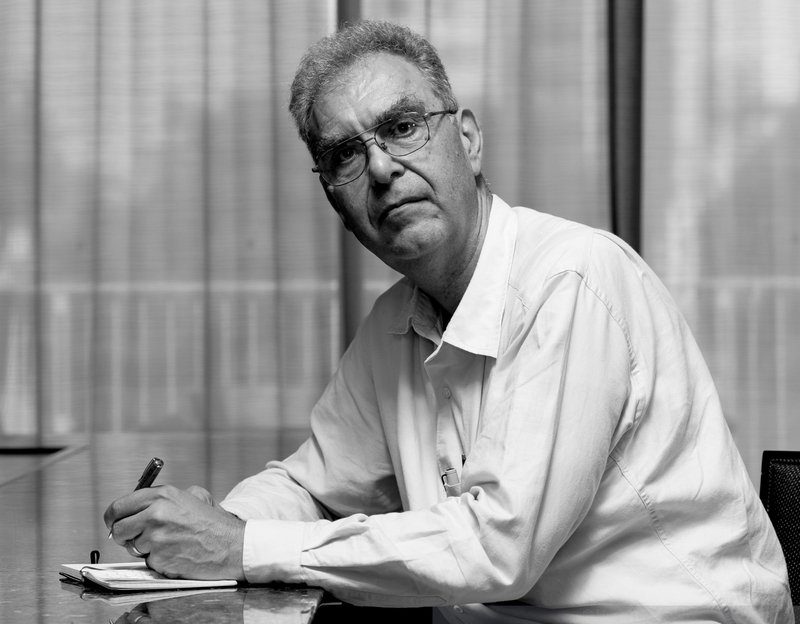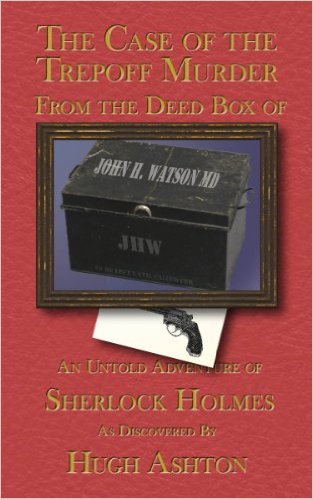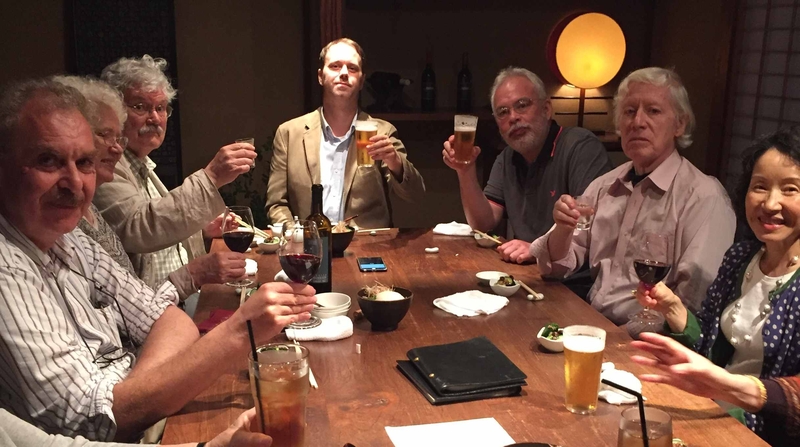July 4, 2016
Hugh Ashton: Technical Writer and Man of Mystery
A core member of SWET for more than two decades and resident of Japan for 28 years, Hugh Ashton recently announced his decision to move back to England, whence he came in 1988. As a speaker and leader of workshops, writer of articles, and behind-the-scenes technician and wordsmith, Ashton played an important role in SWET’s early initiation into advanced information technology, email communications, and software applications and its steps into the age of the Internet, and he still generously shares his expertise today when called upon, digging into code to tweak things on the website. With the shift of his home base from Kamakura to Lichfield, UK, a small cathedral city in the Midlands, we take this opportunity to introduce the multi-faceted life of Hugh Ashton. The following article was compiled by SWET friends from an interview, email exchanges, and other additions.
In 1987 Hugh Ashton received an invitation to the wedding of a British friend working for Lotus Development’s Tokyo office, who had fallen in love with his marketing manager. Ashton, who had already studied a little Japanese, worked out a way to pay for the airfare to Japan by writing an article for a UK magazine on the product design philosophy and marketing of electronic musical instruments in Japan by Yamaha, Korg, Roland, Akai, and so on. He interviewed makers’ marketing staff, got to know the city of Hamamatsu (home of Yamaha and Roland) a little, and began to think of trying to find a job there.
Then in his early thirties, he had worked in various fields since graduating from the University of Cambridge, and, as his website describes it, had “come to rest in the field of information technology” as a technical writer for a British computer maker (back in the days when such companies existed). Wishing to make the move to Japan, he consulted a friend in the Yamaha R&D office in London about jobs within Yamaha Japan for a technical writer. As it turned out, a Yamaha documentation subcontractor (Crestec) was looking for just such a person. When the president of that company visited the U.K. not long after, they discussed the job and work conditions. Ashton was offered moving expenses and a regular salaried job, use of a company car, and other perks. Even in those days, the final fling of the bubble economy, non-Japanese outside the language teaching profession were a relative rarity outside Tokyo, and the brave new world of Japanese corporate life (not to mention the shiny new gadgets) was there to explore. One highlight of his time at Crestec was accompanying a Yamaha London product specialist to Abbey Road Studio A, where a prototype Yamaha recorder had been installed in the machine room, to record a London Philharmonic session conducted by André Previn (Beethoven’s 9th, 4th movement).
He stayed at Crestec for about six years (in the process recruiting SWET veteran Paul Findon and translator Phil Robertson to the company), writing and developing manual production software until the bubble economy burst. (Ashton insists that outcome was none of his doing.) The company downsized its workforce by a third across the board, from “new face” to buchō (department chief) level. Ashton’s business card described him as a kachō (section chief), and he was included in the purge. The company survived, and he stayed on good terms with it as a freelancer.
Just before that disaster, he married Yoshiko Nishio (in what he says was “terrible timing!”). She had studied English in Cambridge in the late 1980s, coincidentally when Ashton was living there, though they did not meet at the time. After returning to Japan, Nishio was enjoying her work as a secretary in a German company operating in Yokohama but was surrounded by speakers of American English. She wanted to meet someone with whom she could converse to maintain her British accent and phrasing. A friend from her Cambridge sojourn who happened to know of Ashton’s move to Japan passed on his Hamamatsu address. They began to correspond, met in person, and the rest is a long and, it appears, mutually affectionate history.
Looking for other work, Ashton parlayed his IT experience into a support and engineering role with TWICS, Japan’s first public-access Internet provider. Some may well remember the SWET channel on PARTI and some of the personalities who inhabited that first online world, accessed by a bank of squealing modems—at the TWICS end, that is.
At one time, the whole of Japan’s commercial Internet came through a single B-channel of an ISDN line (64k bandwidth!), and the system was moving from VMS to HP-UX when Ashton joined TWICS. He remained there for a year, 1994–1995, and then moved on.
Brief episodes in the IT world followed, as a general technical consultant for an outsourcing “body shop” and as vice-president of a tech startup seeking (and failing to find) venture capital for the development of a new technical concept (essentially blade servers on steroids, for those who are interested).
 Moving back to writing, Ashton became the lead technical writer for TASCAM, the professional audio arm of TEAC Corporation (then based in the Tokyo suburb of Musashino, close to the Ashtons’ home in Mitaka), as an independent contractor. That opportunity was found by fortuitous timing, since TASCAM was then seeking an English-language writer and Hugh’s (actually Yoshiko’s) exploratory phone call was routed to the person capable of making decisions.
Moving back to writing, Ashton became the lead technical writer for TASCAM, the professional audio arm of TEAC Corporation (then based in the Tokyo suburb of Musashino, close to the Ashtons’ home in Mitaka), as an independent contractor. That opportunity was found by fortuitous timing, since TASCAM was then seeking an English-language writer and Hugh’s (actually Yoshiko’s) exploratory phone call was routed to the person capable of making decisions.
The work involved extensive liaison with the TASCAM Japanese and U.S. marketing arms (including visits to the U.S. office in Los Angeles) as well as discussions with the R&D engineers on the development of user interfaces as the company made the transition from analog to digital audio. Hugh was also working as a speechwriter for the Japanese arm of a major international NGO, a role that occasionally involved writing letters for then Prime Minister Hashimoto Ryūtarō, and then Deputy Prime Minister Aso Tarō. He also worked as a contractor for investment banks (Goldman Sachs and Deutsche Bank) in Tokyo, documenting IT procedures and standards.
In 1999, the worsening health of Yoshiko’s mother necessitated a move from Mitaka to Kamakura (Yoshiko’s hometown), where Hugh and Yoshiko have lived since. Following the death of Mrs. Nishio, they stayed close to Yoshiko’s father until his death in 2009 at the age of 99 years and 11 months. Right up to the end, Hugh and Mr. Nishio enjoyed each other’s company, eating kaiten sushi together and having their hair cut together at the same barber.
After Mr. Nishio’s death, Yoshiko and Hugh inherited and moved into the family home, where they have since lived. He has worked for magazines and publishers, producing industry reports, articles, and advertorials, most notably for Bloomberg Businessweek, where he researched and wrote most of the annual Japan Section for four years.
The SWET Connection
Ashton first came to SWET after moving to Mitaka and setting up shop as a self-employed technical writer, after hearing about the society from Ed Chmura, with whom he had had business contacts in Hamamatsu. His first SWET event was the launch of the 1998 edition of the Japan Style Sheet, at which he was surprised to find Paul Findon.
Surprisingly, SWET had slipped under his radar during his time at TWICS, but the mailing list and the SWET Newsletter provided valuable links to others with similar interests in those pre-Facebook days.
SWET Events and Activities
From the late 1990s, Ashton stepped up on an irregular basis, helping SWETers make the leap from traditional to advanced information and computer technologies. In June 2000 he gave a talk on “Technical Writing and Manual Production: Explaining the Unexplainable,” and in June 2001 teamed up with then editor and teacher Sako Eaton to present the workshop “Taming Your E-mail.” Always ready to take on a stimulating literary challenge, he participated in the “Haiku on the Spot” event with haiku poetasters Naomi Otani, Yumi Nishikawa, Hugh Ashton, Fred Uleman, John Gribble, David Paget, and Sam Tanahashi. (These events were written up in SWET Newsletter issues 91, 94, and 99.)
Ashton’s contribution to the SWET Newsletter column “A Day in the Life” showed how wordsmiths with good technical instincts could make use of new devices and software available to improve their work and professional activities. (Published in 2003, in issue 103 of the newsletter, “A Post-Industrial SWETer at Work” is available here.)
As the use of computers not only for writing and word processing but also for editorial mark-up and collaboration advanced, he helped us get a better grip on these software tools through two workshops held May 26 and July 6, 2006, at Sophia University’s Monumenta Nipponica office: “Advanced Mark-up Tools for Editors.”
In addition to these seminars and participation in other SWET events, Ashton also took over the job of checking and typesetting the annual SWET Directory from Becky Davis, following her illness. The directory was a print-based publication for years and then a PDF version before the member presence on the current SWET website (see the Find a Member section) took its place.
Ashton worked with the then membership secretary, Kevin Cleary, to devise a way in which the membership data could be shared and used in the production of the directory.
Teaching at Sophia University and Supporting the Monumenta Nipponica website
Kevin Cleary had been a friend from the day Ashton introduced himself to Kevin while both were walking along the road to Kita-Kamakura station in the early 2000s. When Kevin took on a full-time permanent position at the Tokyo Medical and Dental University in Ochanomizu, he was forced to give up his teaching at Sophia University, and he offered two courses to Ashton, who protested that he was not a teacher but still took on these classes (“Presentations” and “Hypermedia”). He taught for several years, emphasizing the role of data and information structuring above technical know-how.
Kevin’s work supporting the technical side of Monumenta Nipponica came to an end at that time, and Ashton took over the (not too onerous) task of maintaining the website and answering occasional technical queries.
Contributions to the New SWET Website (2011–2012)
When the SWET website was revamped, Ashton generously contributed his time and technical know-how to the process, quietly assisting with the migration of the membership data to the new site and providing help with the nitty-gritty of SWET’s new online presence, figuring out, for example, how to get the PayPal buttons up so that members could pay their dues online, and much more.
Personal Writing Interests and Endeavors
From 2009, Ashton has been publishing fiction, at first self-published and then with Inknbeans Press of California. Always ahead of the curve, Ashton gave a seminar for SWET in Osaka on his early forays into ebook publishing, praising Smashwords and describing his experience working with Kindle Direct Publishing. The majority of his 20+ fiction titles have been continuations of the Sherlock Holmes stories, written in the style of the originals, and Ashton has been judged by many to be the best living writer of Sherlock Holmes “pastiches,” as they are known in the trade. Part of the popularity of his Holmes stories, written in the voice of Dr. Watson as “discovered manuscripts,” is certainly attributable to their availability as reasonably priced Kindle Editions. He has also written thrillers and children’s books, as well as the acclaimed Tales of Old Japanese, short stories about members of the “silver generation” in Japan. (More at http://hughashtonbooks.info.)
 Lichfield, the Ashtons’ destination in Britain, is near Hugh’s family. The birthplace of Samuel Johnson, it should prove a congenial place for carrying out SWET-related activities. Ashton has announced plans to provide services for “making a manuscript into a book” to potential authors—editing, proofing, typesetting, etc.—as well as continuing his fiction writing, which is easier to promote in the UK than in Japan.
Lichfield, the Ashtons’ destination in Britain, is near Hugh’s family. The birthplace of Samuel Johnson, it should prove a congenial place for carrying out SWET-related activities. Ashton has announced plans to provide services for “making a manuscript into a book” to potential authors—editing, proofing, typesetting, etc.—as well as continuing his fiction writing, which is easier to promote in the UK than in Japan.
After 28 years in Japan (without having worked as a language teacher!), Ashton has many memories of good times and experiences. He recounted some of the stories above on May 27, 2016, at a send-off gathering held for the Ashtons by members of the SWET Steering Committee at a restaurant in Kamakura. On that occasion, he read a passage from his book At the Sharpe End, where the hero, an expatriate Briton, sums up some of his feelings:
Sharpe always felt that one of the joys of the international life in Tokyo was the chance to make friends with people from different countries whom you’d have little or no opportunity of meeting in “normal” life.
His friends ranged from Czechs, Hungarians, Latvians and Russians, through New Zealanders and Australians, and Chinese from Hong Kong, Singapore and Canada, through to a large number of Indians.
Those who know Hugh Ashton congratulate him for his authorial success and his professional achievements and wish him the very best in his transition back to the U.K. after nearly three decades in Japan.
(Compiled with the cooperation of Hugh Ashton, Julie Kuma, Ruth S. McCreery, Jay Revelle, Lynne E. Riggs, Richard Sadowsky, and Fred Uleman. Originally written for the SWET website, June 28, 2016.)

